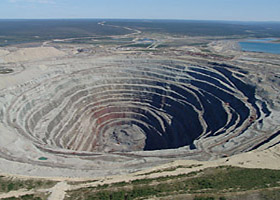


Pension funds’ interest in commodities has also piqued the interest of a major player in the exchange-traded fund (ETF) space: ETF Securities, a firm specializing in commodity-based ETFs. Last week, it announced plans to further expand its product range in response to growing demand, particularly among pension funds. As Matt Johnson, ETF Securities’ head of distribution, told the Financial Times, pension funds are showing a great interest in commodity exchange-traded products (ETPs) as they seek to generate better returns than those offered by sovereign bonds.
That kind of interest can be seen in the numbers: inflows into commodity ETPs increased by 52.3% in 2012, gaining $23 billion versus just $15.1 billion in 2011.
Impressive numbers, but will they rise in 2013? Possibly not. Investors are beginning to question the link between commodities and hedging—today, many are realizing the performance of commodities has become more tied to equities, cancelling out that side of the hedge. Plus, China’s slowdown has made the sector more vulnerable. All this means is, commodities are more volatile right now—and that is scaring off some funds. A recent article in Pensions & Investments, for example, points out how some of the biggest public pension plans in the U.S. are slowing down their investments in commodities or are pulling up stakes altogether. Last spring, the Illinois Teachers’ Retirement System terminated its commodities strategy altogether while CalSTRS has yet to invest a $150-million allocation to commodities investments it made in 2010 due to volatility in the market.
So where does this leave commodities-driven ETFs? Some believe it’s time to seek out niche investments rather than exposure to the sector as a basket. Uranium is one such subset of the ETF universe that could be poised for growth (see this piece from Nasdaq). And, of course, gold is big in Japan right now. This could be a sign of things to come as investors begin to slice up the commodities sector as they search for better, more stable returns. ETFs that offer focused exposure to the right niches could just draw more interest.
